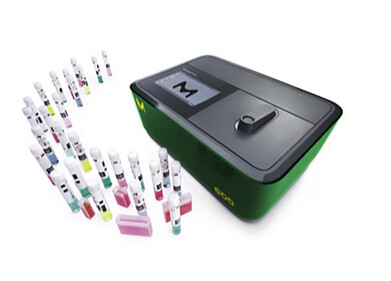Laboratory products
Who Won the 2018 Nobel Prize in Physics?
Oct 10 2018
One of the most prestigious awards on the planet, the Nobel Prize in Physics recognises professionals who have made outstanding contributions to the field. In the past, the accolade has been awarded to the likes of Albert Einstein, Marie Curie and Werner Heisenberg.
This year, the prize was awarded to a trio of scientists for their ground-breaking work in the laser physics field. All three made outstanding contributions to laser physics, which has evolved from a borderline sci-fi concept to a technology used in daily life, from barcode scanners to medical surgery.
The invention of optical tweezers
Professor Arthur Ashkin, an American scientist and former Columbia University student received half the prize for his invention of optical tweezers. His work focussed on the use of light beams to trap and move objects, a technology that's particularly useful in biology for manipulating cells, DNA, proteins, viruses and bacteria. As the light doesn't damage the samples it offers scientists unprecedented freedom.
Robert Mawhinney, chair of Columbia's Physics Department praised Ashkin for his contribution to laser science. “Optical tweezers have allowed us to manipulate material from the size of atoms to the larger, but still microscopic, components of living organisms,” he says. “Such a capability was not in anyone’s mind, except perhaps his, when he ventured into the Columbia Radiation Lab in the 1940s as a talented undergraduate, ready for his first exposure to research at the boundaries of human knowledge. He has spent his career moving that boundary forward and we applaud his success.”
Canadian professor crowned third female Nobel Prize in Physics laureate
The other half of the award was bestowed on Professor Donna Strickland and Professor Gerard Mourou for the breakthrough development of high-intensity ultra-short optical pulses, a technology that helped to develop powerful, ultra-precise lasers. The technique is known as chirped pulse amplification and involves stretching a short laser pulse to reduce intensity. The stretched pulse is then amplified and compressed a second time, which dramatically increases the intensity, heightens precision and abolishes original limitations of the laser. Since its invention chirped pulse amplification has been used to develop life-changing technology like laser eye surgery.
Strickland is the first female Nobel Prize in Physics laureate since 1963, when Maria Goeppert-Mayer won recognition for her discoveries regarding nuclear shell structure. Strickland is also the third ever woman to be awarded the Nobel Prize in Physics, preceded only by Goeppert-Mayer and Marie Curie.
“We need to celebrate women physicists because we’re out there,” said Strickland. "I’m honoured to be one of those women.”
For a closer look at the next generation technologies shaping the face of modern laboratories don't miss 'Accurate Measurements of Biological Nanoparticles', which introduces the MRPS development of the Coulter Counter gold standard technique for cell counting and sizing.
Digital Edition
Lab Asia 31.6 Dec 2024
December 2024
Chromatography Articles - Sustainable chromatography: Embracing software for greener methods Mass Spectrometry & Spectroscopy Articles - Solving industry challenges for phosphorus containi...
View all digital editions
Events
Jan 22 2025 Tokyo, Japan
Jan 22 2025 Birmingham, UK
Jan 25 2025 San Diego, CA, USA
Jan 27 2025 Dubai, UAE
Jan 29 2025 Tokyo, Japan



















